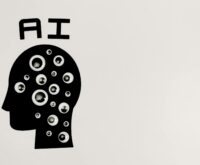
Have you ever felt like you’re hitting a wall in your learning? You spend hours staring at textbooks, re-reading notes, and watching lectures, yet when it’s time to apply that knowledge, you draw a blank. It feels like crucial pieces of the puzzle are missing. These frustrating voids are known as learning gaps, and they are the silent saboteurs of academic and professional success.
A learning gap is the chasm between what a student is expected to know and what they actually know. It’s not a reflection of intelligence or effort; it’s often a symptom of using inefficient study strategies. The common methods we were taught—highlighting, re-reading, and summarizing—often create an “illusion of competence.” They make us feel productive, but the information rarely sticks in our long-term memory.
But what if you could bridge that gap? What if you could transform your study sessions from passive, forgettable exercises into active, powerful learning experiences that build lasting knowledge?
The good news is, you can. Cognitive science and psychology have spent decades decoding the human brain’s learning process. The result is a treasure trove of evidence-based techniques that work with your brain’s natural wiring, not against it. These aren’t quick hacks or magic bullets; they are robust, scientifically validated strategies that, when applied consistently, can help you identify your weaknesses, close your learning gaps, and build a deep, interconnected understanding of any subject.
This guide will walk you through seven of the most powerful science-backed study techniques. We’ll explore the ‘why’ behind each method and provide actionable steps to integrate them into your routine, starting today. Prepare to revolutionize the way you learn.
1. Active Recall (or Retrieval Practice): The Foundation of Strong Memory
What it is: Active Recall, often called retrieval practice, is the act of actively retrieving information from your memory rather than passively reviewing it. Instead of re-reading a chapter, you close the book and ask yourself: “What were the main points of that chapter?”
The Science Behind It: Every time you pull a memory from the depths of your brain, you aren’t just accessing it; you are strengthening its neural pathway. Neuroscientists have shown that this act of retrieval makes the memory more accessible and durable in the future. Passive review, like re-reading or highlighting, doesn’t create these strong pathways. It’s like walking down a well-trodden path versus forging a new one through a dense forest. Forging the path is harder, but it makes it much easier to find your way back next time. This process literally changes your brain, making future recall faster and more reliable.
How to Implement It to Close Gaps: Learning gaps often exist because information was never properly encoded into long-term memory. Active recall directly targets this weakness.
- Flashcard Systems: Move beyond simple definitions. Create flashcards with a question or a concept on one side and a detailed explanation on the other. The key is to force your brain to produce the answer before you flip the card.
- The “Brain Dump” Method: After studying a topic, take a blank sheet of paper and write down everything you can remember about it. Don’t worry about structure initially; just get the information out. Afterward, compare your brain dump to your source material. The missing pieces are your learning gaps, clear as day. Now you know exactly what to focus on.
- Practice Questions: Work through problems and questions at the end of chapters without looking at the solutions first. Treat them like a mini-test. The struggle to find the answer is the learning process itself.
- Teach a Friend (or a Pet): Try to explain a concept to someone else from memory. Their questions (or your own internal monologue if you’re explaining it to your dog) will quickly reveal where your understanding is fuzzy.
By consistently forcing yourself to retrieve information, you’re not just memorizing facts; you’re building a robust mental model of the subject, making it almost impossible for gaps to persist.
2. Spaced Repetition: Defeating the Forgetting Curve
What it is: Spaced repetition is a learning technique that involves reviewing information at increasing intervals over time. Instead of cramming for a test by studying a topic for five hours straight on one night, you study it for one hour today, then again for 30 minutes in a few days, then for 15 minutes next week, and so on.
The Science Behind It: This method works in direct opposition to the “Forgetting Curve,” a concept discovered by psychologist Hermann Ebbinghaus in the 19th century. The curve shows that we forget information exponentially over time if we don’t make a conscious effort to retain it. Spaced repetition strategically interrupts this forgetting process. Each time you review the information just as you are about to forget it, you flatten the curve and reinforce the memory. This process tells your brain, “Hey, this information is important! Don’t throw it away.” Over time, the intervals can become much longer (weeks, months, or even years) because the memory has been successfully transferred to your long-term storage.
How to Implement It to Close Gaps: Learning gaps are widened by forgetting. Spaced repetition is the ultimate tool for long-term retention, ensuring that once a gap is filled, it stays filled.
- The Leitner System: This is a classic manual method using flashcards and several boxes. Correctly answered cards move to a box that gets reviewed less frequently, while incorrect cards stay in the “frequent review” box.
- Digital Flashcard Apps: Modern technology makes this incredibly easy. Apps like Anki, SuperMemo, or Quizlet use sophisticated algorithms to schedule reviews for you. You simply rate how well you knew an answer, and the app determines the optimal time to show you that card again.
- Create a Review Calendar: If you prefer an analog approach, create a simple study calendar. After learning a new concept, schedule your next review sessions:
- Review 1: 1-2 days later
- Review 2: 7 days later
- Review 3: 30 days later
- Review 4: 3-6 months later
By spacing out your reviews, you learn more efficiently in less total study time than cramming. It’s the definition of studying smarter, not harder, and it’s your best defense against the natural erosion of knowledge.
3. Interleaving: The Power of Mixed Practice
What it is: Interleaving is the practice of mixing multiple, related subjects or skills during a single study session. This is the opposite of “blocking,” where you study one topic exhaustively before moving to the next (e.g., studying only Topic A for an hour, then only Topic B for an hour). With interleaving, you would study A, then B, then C, then A again, then B, and so on.
The Science Behind It: When you block your practice, you get into a rhythm. Your brain knows what to expect and can solve problems on autopilot without much deep thought. For example, if you’re only doing multiplication problems, you just keep applying the same procedure. Interleaving prevents this. By switching between different types of problems (e.g., multiplication, division, addition), you force your brain to constantly scan the problem, identify its type, and retrieve the correct strategy from your mental toolbox. This initial struggle, known as a “desirable difficulty,” leads to a more flexible and deeper understanding. It trains your brain to differentiate between concepts, which is a critical skill for real-world application and exams.
How to Implement It to Close Gaps: Gaps often appear when you’re asked to apply knowledge outside the neat, organized context in which you learned it. Interleaving prepares you for this.
- Mix Up Problem Sets: When studying math or science, don’t just complete all the problems from Chapter 3. Instead, do a few from Chapter 3, then a few from Chapter 2, then a few from Chapter 1. This mimics the format of a cumulative exam.
- Vary Your Subjects: If you’re studying for history, chemistry, and literature, try dedicating 25 minutes to history, then 25 minutes to chemistry problems, then 25 minutes to analyzing a poem, and then repeat the cycle.
- In Skill-Based Learning: If you’re learning a musical instrument, don’t just practice scales for an hour. Practice scales, then a piece of music, then chord progressions, and then cycle back. If you’re learning a language, mix vocabulary, grammar drills, and listening practice.
Interleaving can feel slower and more difficult in the short term compared to blocking. This is because you’re not getting the same immediate gratification of “getting it right” over and over. But the long-term payoff is immense, leading to a more robust and adaptable knowledge base that can withstand the pressure of a real test.
4. Elaboration: Connecting the New with the Old
What it is: Elaboration is the process of finding meaningful connections between new information and what you already know. It involves asking “how” and “why” questions to build a rich, interconnected web of knowledge rather than memorizing isolated facts.
The Science Behind It: Our brains don’t store information like files in a cabinet; they store it in interconnected networks of neurons called schemas. When you learn something new, the goal is to integrate it into an existing schema. Elaboration is the process of actively building those connections. The more connections you make to a piece of information, the more pathways you have to retrieve it later. It’s like building multiple roads to the same city; if one road is blocked, you can take another. Simply memorizing a fact is like having a single, fragile path that is easily lost.
How to Implement It to Close Gaps: Gaps are often isolated islands of information. Elaboration builds bridges between them, creating a cohesive whole.
- Ask “Why” and “How”: As you read, constantly pause and ask yourself questions. Why is this true? How does this connect to what I learned last week? How is this similar to or different from another concept?
- The Analogy Method: Try to explain a new concept using an analogy or metaphor related to something you understand well. For example, describing the function of a cell’s mitochondria as the “powerhouse” of the cell connects a new biological concept to a familiar idea.
- Concrete Examples: Generate your own specific, real-world examples for abstract ideas. If you’re learning about economic inflation, think about how it affects the price of your favorite coffee or your weekly groceries. This makes the abstract tangible and memorable.
Elaboration transforms learning from a passive act of reception into an active act of creation. You are not just a consumer of information; you are a builder of knowledge.
5. Dual Coding: Engaging the Eyes and Ears
What it is: Dual coding is the theory that we process and remember information better when it is presented in both verbal (text, words) and visual (pictures, diagrams, charts) formats simultaneously.
The Science Behind It: Proposed by Allan Paivio, the dual-coding theory suggests we have two distinct cognitive channels for processing information: a verbal channel and a non-verbal/visual channel. When you engage both channels at the same time, you create two distinct but linked memory traces for the same piece of information. This creates a more powerful and resilient memory. If you forget the verbal explanation, the visual image might trigger your memory, and vice-versa. Think about how much easier it is to assemble furniture with illustrated instructions rather than just a wall of text.
How to Implement It to Close Gaps: If a purely text-based explanation isn’t clicking, a visual representation can often bridge the gap in understanding.
- Create Your Own Infographics: Don’t just rely on the diagrams in your textbook. After reading about a process (like photosynthesis or the legislative process), try to draw your own diagram, flowchart, or mind map from memory. The act of creating the visual forces you to organize the information logically.
- Mind Mapping: Place a central idea in the middle of a page and branch out with related concepts, using colors, symbols, and keywords. This visual hierarchy can reveal connections you might miss in linear notes.
- Search for Visuals: If you’re struggling with a concept, actively search for it on YouTube, Khan Academy, or even a simple Google Image search. Watching an animation of a cell dividing is far more effective than just reading about it.
- Use Timelines: For subjects like history or literature, create visual timelines to map out events, character arcs, or historical periods. This helps you see the cause-and-effect relationships and the overall narrative.
By combining words and visuals, you cater to your brain’s preferred way of learning, making complex information more digestible and memorable.
6. The Feynman Technique: The Ultimate Test of Understanding
What it is: Named after Nobel Prize-winning physicist Richard Feynman, this technique is a mental model for learning anything. It boils down to a simple, four-step process:
- Choose a concept you want to understand.
- Explain it in simple terms, as if you were teaching it to a child who has no prior knowledge of the subject.
- Identify the gaps in your explanation where you struggle, get confused, or have to use complicated jargon. This is where your learning gaps are.
- Go back to the source material to fill those gaps. Review and simplify until you can explain the concept fluently and simply.
The Science Behind It: This technique is a powerful combination of active recall, elaboration, and metacognition. The act of simplifying a complex topic forces you to break it down into its fundamental principles. You cannot simplify what you do not truly understand. Using jargon is often a way to hide a lack of understanding. When you force yourself to use simple language, you strip away that cover and confront the raw edges of your knowledge.
How to Implement It to Close Gaps: This technique is purpose-built for identifying and closing learning gaps.
- Write or Speak It Out: Grab a notebook or a whiteboard and write out your explanation. Alternatively, speak it out loud. You can even practice this by verbalizing your thoughts. Using an AI tool to capture what you say, like the intelligent voice notes offered by services such as https://jivoice.com/hostinger/, can help you review your own explanations later and pinpoint precisely where you stumbled or used vague terms.
- Focus on the Sticking Points: Pay close attention to the moments you pause, say “um,” or reach for a technical term because you can’t find a simpler way to say it. These are your targets. Circle them, highlight them, and make them your priority for review.
- Use Analogies: As in elaboration, creating simple analogies is a cornerstone of the Feynman Technique. If you can liken a complex idea to a simple, everyday process, you’ve likely mastered it.
If you can successfully explain a concept in simple terms, you have achieved a deep level of understanding and have effectively closed any learning gaps related to it.
7. Metacognition: Thinking About Your Own Learning
What it is: Metacognition is, quite simply, “thinking about thinking.” It’s the highest level of cognitive skill. It involves being aware of your own thought processes and actively self-regulating your learning journey. Metacognition has two main components:
- Knowledge: Understanding your own learning style, your strengths, your weaknesses, and the nature of the task at hand.
- Regulation: The ability to plan your approach, monitor your progress, and evaluate the final outcome, making adjustments along the way.
The Science Behind It: Students who employ metacognitive strategies consistently outperform those who don’t. By stepping back and analyzing how you are learning, you can make conscious, intelligent decisions about what to do next. Instead of blindly applying a study method, a metacognitive learner asks, “Is this working? Am I understanding this deeply, or am I just memorizing? What should I change if this isn’t effective?” This self-awareness and control allows for a more efficient and targeted approach to closing learning gaps.
How to Implement It to Close Gaps: Metacognition is the GPS for your learning journey; it helps you see where you are, where you’re going, and the best route to get there.
- Plan Before You Learn: Before starting a study session, ask yourself: What are my goals for this session? What do I already know about this topic? What strategy will be most effective for this type of material?
- Monitor While You Learn: During your session, perform regular self-checks. Pause and ask: Do I really understand this, or am I just reading the words? Can I summarize the last page in my own words? Am I getting distracted?
- Evaluate After You Learn: After the session, reflect on its effectiveness. What did I learn? What was the most confusing part? What could I do differently next time to be more efficient? Keeping a simple study journal can be incredibly effective for this.
By developing your metacognitive skills, you become the master of your own learning. You can diagnose your own learning gaps with precision and prescribe the most effective remedy from your toolbox of study techniques.
Conclusion: Becoming an Architect of Your Knowledge
Closing learning gaps isn’t about being smarter or studying longer; it’s about studying smarter. The traditional, passive methods of re-reading and highlighting are like trying to build a brick wall without mortar. The bricks are there, but they form a weak, unstable structure that will crumble under pressure.
The seven science-backed techniques you’ve just read about—Active Recall, Spaced Repetition, Interleaving, Elaboration, Dual Coding, the Feynman Technique, and Metacognition—are the mortar. They bind individual pieces of information into a strong, flexible, and interconnected structure of true knowledge.
Start small. Don’t try to implement all seven at once. Pick one or two that resonate with you and apply them consistently for a few weeks. Use active recall after reading a chapter. Try the Feynman technique on the one concept that has always confused you. Schedule your reviews with a spaced repetition app.
By making these evidence-based strategies a part of your routine, you shift from being a passive recipient of information to an active architect of your own understanding. You will not only close your current learning gaps but also build a foundation of knowledge so strong that future gaps will have nowhere to form.
FAQ (Frequently Asked Questions)
Q1: How quickly can I see results with these study techniques? A1: You can see immediate benefits in comprehension and identifying gaps from your very first session using techniques like Active Recall or the Feynman Technique. However, the most significant, long-term benefits, especially for memory retention from Spaced Repetition, build up over several weeks of consistent practice. The key is consistency.
Q2: Can I combine these study methods? Are some combinations better than others? A2: Absolutely! These techniques are most powerful when combined. A great combination is using the Feynman Technique to identify gaps, then using Active Recall and Spaced Repetition with flashcards to solidify that specific information. You can use Dual Coding to create those flashcards (e.g., a diagram on one side, a simple explanation on the other) and Interleaving to mix them with cards from other topics during your review sessions.
Q3: These techniques feel harder than just re-reading my notes. Am I doing something wrong? A3: No, that feeling of difficulty is a sign that you’re doing it right! Cognitive scientists call this “desirable difficulty.” Passive methods like re-reading feel easy because they don’t challenge your brain. The mental effort required for active recall or interleaving is what builds stronger neural pathways and leads to true, long-lasting learning. Embrace the struggle; it’s where the growth happens.
Q4: I’m not a student anymore. Are these techniques still useful for professional development or learning a new skill? A4: Definitely. These techniques are based on how the human brain learns, which doesn’t change after you leave school. Whether you’re learning a new programming language, mastering a sales pitch, studying for a professional certification, or learning to play the guitar, applying these principles will help you learn faster, retain information longer, and master the skill more deeply.
Q5: What is the single most important technique if I can only start with one? A5: While all are valuable, most learning experts agree that Active Recall (Retrieval Practice) offers the most significant and immediate impact. It fundamentally changes your interaction with the material from passive to active and is the core principle behind many other effective methods. If you do nothing else, stop re-reading and start quizzing yourself.



 Group Project Survival Guide: Ace Your Next Collaboration
Group Project Survival Guide: Ace Your Next Collaboration  Conquer Essay Writer’s Block: Proven Strategies & Tips
Conquer Essay Writer’s Block: Proven Strategies & Tips  Supercharge Your Studies: The Ultimate Student Productivity App Guide
Supercharge Your Studies: The Ultimate Student Productivity App Guide  Find Your Dream Career: The Ultimate Student Guide
Find Your Dream Career: The Ultimate Student Guide  Network Like a Pro: Build Connections From Day One
Network Like a Pro: Build Connections From Day One  Nail That Interview: The Undeniable Power of a Killer Cover Letter
Nail That Interview: The Undeniable Power of a Killer Cover Letter  Join a Web3 Community: The Ultimate Networking Guide
Join a Web3 Community: The Ultimate Networking Guide  What Are AMMs? Automated Market Makers Explained Simply
What Are AMMs? Automated Market Makers Explained Simply  NFT Legal Questions Answered: A Simple Guide
NFT Legal Questions Answered: A Simple Guide  Build a Balanced Cryptocurrency Portfolio: A 2024 Guide
Build a Balanced Cryptocurrency Portfolio: A 2024 Guide  Reading Smart Contract Audits: A Beginner’s Guide
Reading Smart Contract Audits: A Beginner’s Guide  Dynamic NFTs: The Evolving Future of Digital Assets
Dynamic NFTs: The Evolving Future of Digital Assets